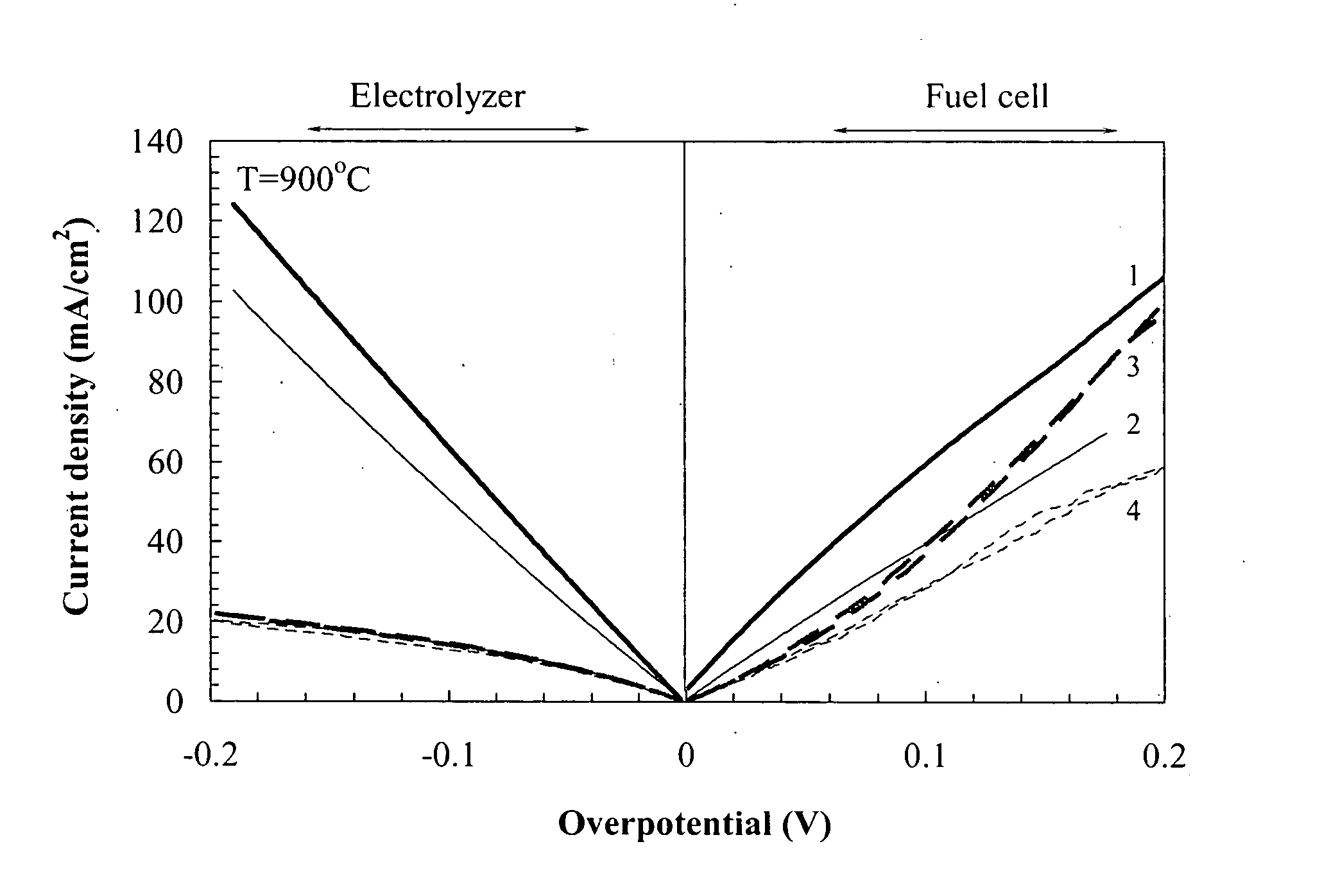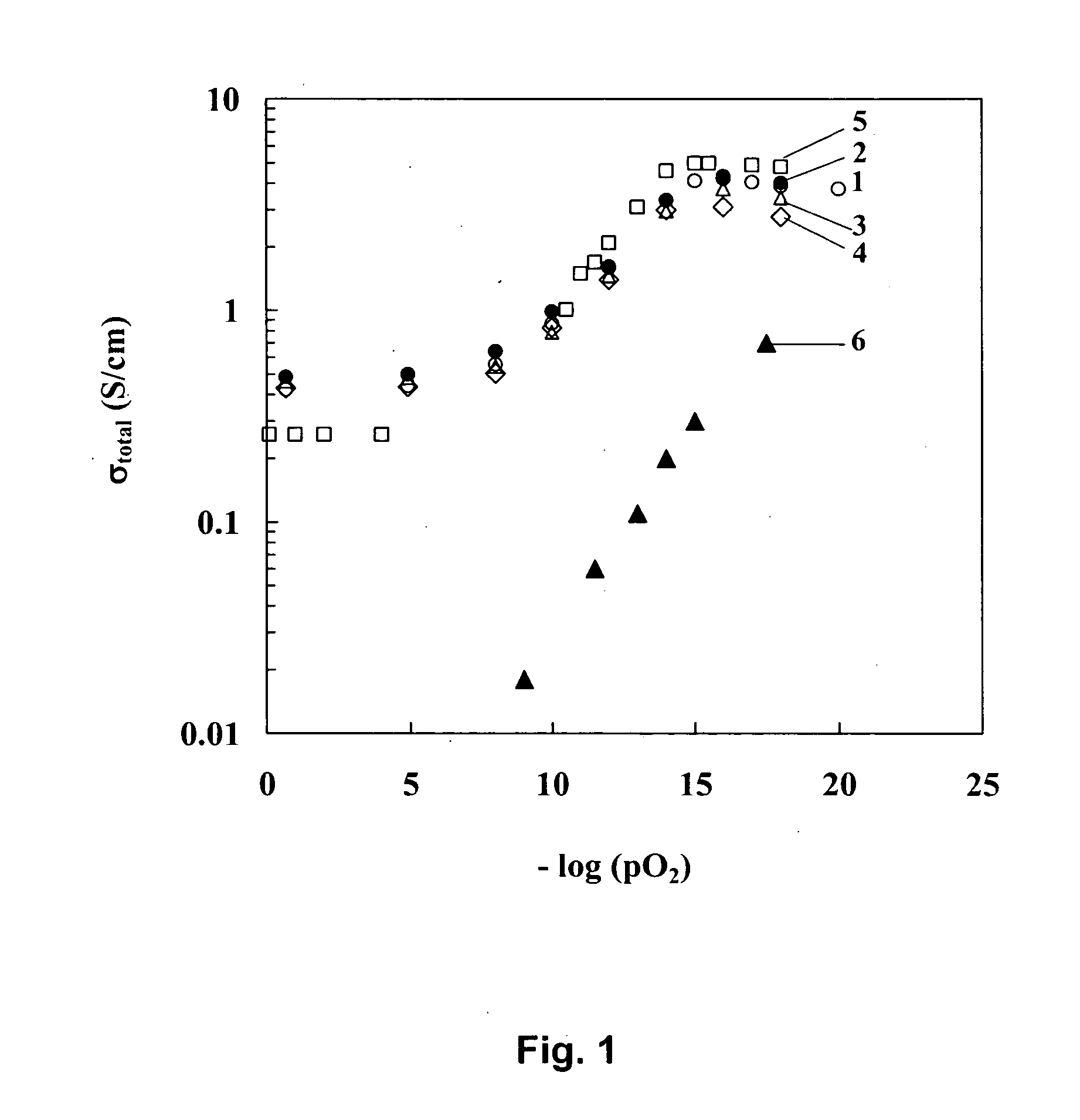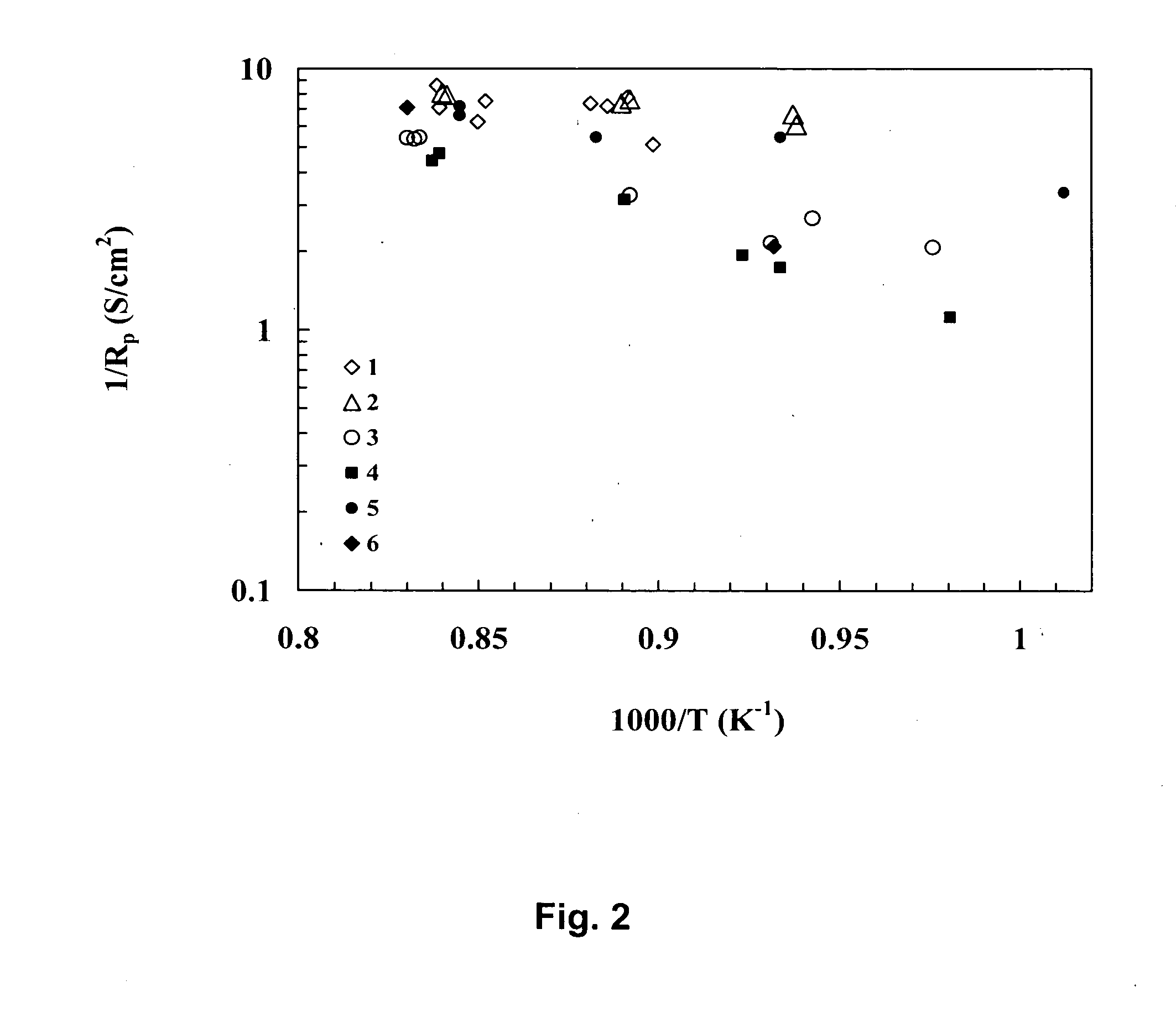Novel composite solid oxide fuel cell anode based on ceria and strontium titanate
a fuel cell anode and composite technology, applied in the direction of solid electrolyte fuel cells, fuel cells, cell components, etc., can solve the problems of insufficient electrical conductivity, general inadequate electrocatalytic activity, and insufficient to give acceptable high electrical conductivity for use as an electrode, so as to improve the stability in oxidizing and sulfur containing atmospheres, improve the effect of performance and increase the electronic conductivity of ceria
- Summary
- Abstract
- Description
- Claims
- Application Information
AI Technical Summary
Benefits of technology
Problems solved by technology
Method used
Image
Examples
examples
General Experimental Set-Up
[0033] For use in the experiments herein, the oxide powders were prepared by glycine / nitrate combustion synthesis using a stoichiometric fuel / oxidant ratio, if the mixture is to too far off stoichiometry, the excess hydrocarbons or nitrates will need to burned off, powder calcinations at 700°-1000° C. for about 2 hours. Doped ceria compositions containing various amounts of dopant were synthesized. Cerium in CeO2 was partially substituted with niobium Ce1-yNbyO2, y=0.01, 0.02, 0.05, and 0.1. Small amounts of powders were calcined at different temperatures to determine the minimal temperature ensuring a single-phase composition for each powder. The phase composition was confirmed by x-ray diffraction using Philips XRG 3100 Automated X-ray Diffraction System. Next, bars for dilatometry and electrical conductivity measurements were isostatically pressed and sintered under empirically-determined conditions to obtain the maximum density of the samples. The ca...
PUM
| Property | Measurement | Unit |
|---|---|---|
| thickness | aaaaa | aaaaa |
| thickness | aaaaa | aaaaa |
| thickness | aaaaa | aaaaa |
Abstract
Description
Claims
Application Information
 Login to View More
Login to View More - R&D
- Intellectual Property
- Life Sciences
- Materials
- Tech Scout
- Unparalleled Data Quality
- Higher Quality Content
- 60% Fewer Hallucinations
Browse by: Latest US Patents, China's latest patents, Technical Efficacy Thesaurus, Application Domain, Technology Topic, Popular Technical Reports.
© 2025 PatSnap. All rights reserved.Legal|Privacy policy|Modern Slavery Act Transparency Statement|Sitemap|About US| Contact US: help@patsnap.com



